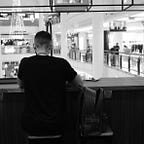The Drawbacks of the Home Office on Culture, Work, and Community
During our distributed working from home during COVID-19, we found many situations we liked. Less commute time, we could collect packages, or have meals with a significant other. We also found a number of things we didn’t like, and felt eroded our culture and strength as a team. What follows below is a note I sent to the argodesign Amsterdam studio discussing some of these drawbacks as we look forward to set a permanent policy in both studio and home working time.
Distributed Working — Looking Forward
Hey AMS,
Several weeks back [one of our design leads] led a discussion collecting information on how we want to work moving forward, looking between the road, our homes, and the studio.
Since that discussion, I’ve taken more time to think seriously about the studio and any potential policies or cultural elements that might come into play as we progress in the year. In our Friday morning meeting, I briefly touched on the notion that I felt a little more anxiety or frustration in the last month. I do have the sense much of this is from a continued lack of outside activities, friends, and travel. We’re simply a bit stuck compared to normal.
Alongside that, we have become slightly more focused on meetings, action items, schedules, and efficiency. I believe I took for granted the impact that not seeing each other in-person would have on us over time — and to give credit, [our Creative Director] pointed this out to me early on.
I’ve found in specific, four (4) areas lacking that we still haven’t found suitable replacements for.
- Happenstance / inspirational conversations — Over our tenure as an office we had been very open in conversations. Anything from why we took on programs, our working approach, or personal feedback, all the way through philosophical arguments on programs, ethics, or policy. While I know I can sometimes personally derail individuals in these conversations, as a studio, it created a cultural foundation of openness and transparency I didn’t often see. Some of our great ideas came from these conversations! As we have been working at home, these have almost entirely been lost.
- Being friends / lunch — Part of our daily routine included roughly 30+ minutes of lunch where we would share personal stories, conversations, videos, travels, and everything else. It was rarely a moment for work conversation, but rather as a community of friends and coworkers.
- Seeing everyone — While I check-in with everyone somewhat often and check-in with programs, most individuals on programs don’t see those on other programs. Building a studio, and in an effort to continue to strengthen our culture, we miss seeing others more that I would like.
- Management — While I am able to still have 1:1’s and coaching sessions with many individuals, I sense the amount of time towards this has decreased overall.
I do believe we have persevered with such strength because we had that culture and community to start. I want to ensure as we think of policies looking forward, we have all of this in mind. That we are cognisant and vigilant of our culture and the future we want to build
Unlike many stories I’ve heard from companies who applied working from home policies, I don’t believe we are less efficient. Surprisingly, it’s been the opposite in some ways. However it’s now sometimes coming at the cost of the culture we worked hard to build. I also don’t think any of us really want to be tied to Meet, Zoom, and Slack for our careers.
I’m very excited to see what is proposed looking forward and what we arrive at as a studio that allows for flexibility, individual needs, and togetherness towards building a strong community and culture. Especially as we return to hiring and building the studio further. This is definitely a strategic move, and shouldn’t simply be played off the tactical situation due to COVID-19.
As always, thank you for your patience in reading!
Want more on Design Entrepreneurship? Check out this ever growing list of articles and view points.
